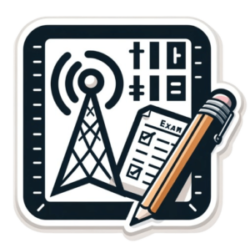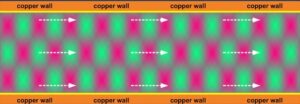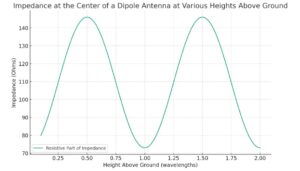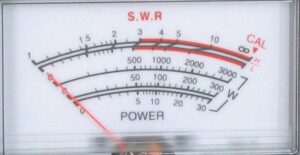Advanced Amateur Radio

The Final Exam is the culmination of the Advanced Amateur Radio course, designed to test your comprehensive understanding and skills across all the essential areas covered in the course, including:
| 1 | Advanced Theory | |
| 2 | Advanced Components and Circuits | |
| 3 | Measurements | |
| 4 | Power Supplies | |
| 5 | transmitters, neutralisations | |
| 6 | Receivers | |
| 7 | Feedlines – Matching and Antenna Systems | |
By integrating knowledge from these varied but interconnected topics, the exam assesses your readiness to tackle the practical and theoretical challenges of advanced amateur radio, aligning with the requirements for the Spectrum Management Advanced Amateur Radio License.

The 8.1.7 Feedlines – Matching and Antenna Systems exam is meticulously designed to assess the comprehensive understanding essential for attaining the Spectrum Management Advanced Amateur Radio License. This exam delves into the nuanced application of antenna tuners and impedance matching circuits, fundamental for ensuring efficient energy transfer and optimized antenna performance in complex radio setups. By evaluating knowledge in these areas, the exam sets a foundation for advanced amateur radio operators to effectively manage and resolve the technical challenges associated with feedlines and antenna systems.
Furthermore, the examination explores the velocity factor and its critical role in feedline performance, alongside the theoretical and practical considerations of current and voltage distribution on antennas. These topics are vital for comprehending how different physical and electrical properties impact overall system functionality. Additionally, the exam addresses the significant effects that ground and elevation have on radiation patterns and angles, providing candidates with the insights needed to design and implement effective antenna systems tailored to specific environmental conditions.
This comprehensive evaluation is crucial for any amateur radio enthusiast seeking to elevate their technical expertise and achieve advanced licensing. It encourages a deeper investigation into the mechanics of antenna systems, pushing candidates to not only grasp theoretical concepts but also apply this knowledge in practical scenarios. Mastery of these subjects is indispensable for optimizing radio communication setups, ensuring candidates are well-prepared to tackle the challenges of advanced amateur radio operation and contribute to the amateur radio community with enhanced skill and confidence.

The Receivers exam is a detailed exploration of the technological principles that underpin the operation of modern radio receivers, designed for those seeking to deepen their understanding and proficiency in amateur radio as part of the Advanced Amateur radio certification. It covers a wide array of topics, starting with the architecture of single and double-conversion superheterodyne receivers, which are fundamental to achieving high-quality signal processing across various frequencies. The exam probes into oscillators and mixers, essential for frequency conversion and signal tuning, and examines the role of RF and IF amplifiers in enhancing signal selectivity and strength.
Furthermore, candidates will be tested on their knowledge of detection mechanisms for demodulating signals, the intricacies of audio processing, and the importance of automatic gain control in maintaining consistent output levels despite varying signal strengths. The exam also critically evaluates common performance limitations encountered in receiver design, including instability, image frequency interference, and spurious responses, challenging students to identify and mitigate these issues in practical scenarios.

The 8.1.5 Transmitters and Neutralization exam is an in-depth assessment focusing on the critical aspects of radio transmission technology. Candidates will be tested on their knowledge of RF power amplifiers and the intricacies of transmitter neutralization to ensure stable and efficient signal transmission. The exam delves into amplitude modulation (AM) techniques, single sideband operations, and the importance of linearity, alongside practical two-tone tests. Further, it evaluates understanding of frequency modulation (FM), including deviation, modulation index, and the use of deviation meters.
Participants will also be challenged on their comprehension of FM transmitter and repeater circuit designs, essential for extending communication ranges. Signal processing, covering audio frequency (AF), intermediate frequency (IF), and radio frequency (RF) stages, is another critical component, ensuring candidates are well-versed in the modification and enhancement of signals. Moreover, the exam includes codes and protocols such as Baudot, ASCII, and various error detection and correction methods, pivotal for digital communication. Lastly, it covers spread spectrum technologies, including frequency hopping and direct sequences, highlighting their role in secure and reliable wireless communication.

Ace Your Power Supply Knowledge with the 8.1.4 Practice Exam
Dive deep into the heart of amateur radio equipment with hamshack.ca’s 8.1.4 Power Supplies Practice Exam. Tailored for advanced amateur radio students, this exam challenges you to master every aspect of power supply systems, from the basics of transformer and rectifier circuits to the complexities of regulated power supplies and everything in between. Whether you’re a seasoned operator or gearing up for the Advanced Amateur Radio certification, this practice exam is your ultimate test of knowledge and troubleshooting skills in power supply technology.
Key Exam Topics:
- Transformers and Rectifiers: Decode the essentials of AC to DC conversion.
- Voltage Doubling and PIPs: Amplify your understanding of voltage output.
- Filter Circuits: Smooth out the noise with advanced filtering techniques.
- Linear vs. Switching Regulators: Navigate the efficiencies and applications of voltage regulation.
- Regulated Power Supplies: Guarantee stable operation for your radio equipment.
Featuring 25 questions from the Advanced Amateur Radio question bank, the 8.1.4 Power Supplies Practice Exam offers a comprehensive review of power supply mechanisms crucial for any radio setup. With the flexibility of multiple attempts and direct links for in-depth course reviews.

Gear up for the 8.1.3 Measurements Practice Exam, an essential segment of the hamshack.ca QSL Advanced Amateur Radio course material. This targeted exam assesses your proficiency in various measurement techniques and tools crucial for any advanced-level amateur radio operator. The exam encompasses a variety of topics, which include:
- AC Measurements: Knowledge of alternating current characteristics such as peak, peak-to-peak, average, and RMS values.
- Power Measurements: Understanding of Peak Envelope Power (PEP), comparisons of PEP to average power, and calculations related to the voltage across the load.
- Radio Testing Equipment: Familiarity with the use of dip meters and signal generators in radio tuning and testing.
- Calibration and Frequency Measurement: Proficiency with crystal calibrators, marking generators, and frequency counters for accurate signal processing.
- Oscilloscope: Skills in using an oscilloscope for visualizing waveforms and signal analysis.
- Meters and Measurement Devices: Competence in utilizing meters, multimeters, and power meters for various electrical and radio frequency measurements.
Structured with 25 questions selected from a comprehensive pool, the 8.1.3 Measurements Practice Exam is designed to test and reinforce your understanding of these measurement concepts and tools. It allows multiple attempts, ensuring you can measure your progress and achieve a deep understanding of the content.

Advanced Theory Practice Exam Overview
Step up to the challenge with hamshack.ca’s Advanced Theory Practice Exam, designed to evaluate your expertise in critical theoretical aspects of amateur radio. This exam is an integral component of the Advanced Amateur Radio course suite, specifically structured for those preparing for the Advanced License qualification in Canada. It focuses on five key areas:
- Time Constant – Capacitive and Inductive: Testing your understanding of the rate at which capacitors and inductors charge and discharge in a circuit.
- Electrostatic and Electromagnetic Fields, Skin Effect: Assessing your knowledge of field theory and the behavior of high-frequency currents on conductor surfaces.
- Series-Resonance: Examining your grasp of resonance in circuits where inductance and capacitance are aligned in a series configuration.
- Parallel Resonance: Quizzing your understanding of resonance in circuits with parallel-aligned inductance and capacitance.
- Quality Factor (Q): Checking your insight into the ‘Q’ factor, a dimensionless parameter that describes the damping of resonator modes.
This Advanced Theory Practice Exam pulls 25 random questions from the Advanced Theory question pool, ensuring a comprehensive test of your knowledge in these fundamental areas. The exam setup supports multiple attempts, offering a thorough learning experience and preparation for the actual certification exam.
73 Don VE7DXE

Advanced Components Practice Exam Overview
The Advanced Components Practice Exam is a crucial component of the preparatory path for those aiming to achieve the Advanced Amateur Radio certification, particularly targeting the Spectrum Management and Telecommunications Advanced Amateur Radio Exam. This specialized exam draws from a comprehensive pool of questions, encompassing all 12 courses dedicated to the advanced aspects of amateur radio technology and operations. Each attempt at the exam presents a unique set of 25 questions, randomly selected from a total pool of questions that thoroughly cover the following key areas:
- Semiconductor Materials and Doping: This section tests the candidate’s understanding of the properties and doping processes of materials like Germanium, Silicon, and Gallium Arsenide to create P-type and N-type semiconductors.
- Diodes: Questions focus on various diode types, including point-contact, junction, hot-carrier, and Zener diodes, along with their specific applications in radio communications.
- Transistors: This area evaluates knowledge on the operation and application of NPN and PNP transistors in amplification and switching.
- Field-Effect Transistors (FETs): Candidates are tested on their understanding of JFETs and MOSFETs, their characteristics, and their roles in radio systems.
- Silicon-Controlled Rectifiers (SCRs): This section assesses the candidate’s grasp of SCRs and their utility in circuit power control.
- Amplifiers: Knowledge on the different classes of amplifiers (A, AB, B, C) and their application in radio communications is evaluated.
- Amplifier Circuits: The exam differentiates between discrete and integrated circuit amplifiers, focusing on their uses.
- Operational Amplifiers: Questions cover the properties and applications of operational amplifiers in amateur radio.
- Mixers and Frequency Multipliers: Understanding of the role of mixers and frequency multipliers in signal processing is tested.
- Digital Logic Elements: This section checks the candidate’s basic knowledge of digital logic and its applications in radio communications.
- Quartz Crystals: The exam explores the properties and applications of quartz crystals, especially in frequency stabilization.
- Advanced Filter Circuits: Knowledge of AF and RF filter circuits and their significance in signal processing is assessed.
The dynamic nature of the exam, with its 25 questions randomly selected for each attempt, ensures a comprehensive testing experience, encouraging candidates to achieve a deep and broad understanding of advanced amateur radio components and theories. This approach not only prepares candidates for the certification exam but also enhances their practical knowledge and skills in amateur radio operations.

Waveguides and Microstrip Lines in High-Frequency Systems
Navigating the High-Frequency Spectrum with Waveguides and Microstrip Lines In the intricate world of high-frequency radio communications, understanding the mechanics and applications of waveguides and microstrip lines is crucial. This chapter, titled “Waveguides, Microstrip Lines,” delves deep into these vital components of modern radio frequency (RF) and microwave systems. Designed for amateur radio operators and technicians, this chapter provides a comprehensive exploration of these technologies, elucidating their roles, advantages, and the principles governing their operation.
Waveguides: The Pathway for Microwave Frequencies The chapter begins by discussing waveguides, which are essential for efficiently transporting electromagnetic energy at microwave frequencies. It covers the fundamental aspects of waveguides, such as their operational frequency range, efficiency attributes, and structural requirements. Understanding the properties that contribute to a waveguide’s efficiency, such as low radiation, dielectric, and copper losses, is essential for applications where signal integrity at high frequencies is paramount.
Microstrip Lines: Compact and Integrated Transmission Next, the focus shifts to microstrip lines, a type of printed circuit transmission line used extensively in RF and microwave circuits. These lines are integral to modern electronics, offering a compact and integrated solution for high-frequency signal transmission. The chapter discusses the characteristics of microstrip lines, their advantages, and the challenges they pose, such as reduced shielding compared to coaxial cables.

Radiation Resistance, Antenna Efficiency, and Beamwidths
Understanding the intricacies of radiation resistance, antenna efficiency, and beamwidths is fundamental for amateur radio operators aiming to optimize their antenna systems for maximum performance. Radiation resistance plays a pivotal role in determining how an antenna radiates energy into the atmosphere, acting as a theoretical resistance that converts electrical power into electromagnetic waves. Antenna efficiency, on the other hand, measures the effectiveness of this conversion process, taking into account all losses, including ohmic resistance of the antenna elements and feedline. Beamwidths, crucial for directional antennas, define the spread of the main lobe of radiation, affecting how well an antenna can focus energy in a particular direction. Together, these concepts form the backbone of antenna theory, influencing design choices, installation practices, and overall system performance. By exploring these topics, operators can significantly enhance their understanding of how antennas work and how to make them work better in various communication scenarios.

Ground and Elevation Effects, Vertical Radiation Angles
Exploring the Terrain of Antenna Theory In the realm of amateur radio, the interplay between antenna characteristics, ground effects, and elevation is a topic of both complexity and fascination. This chapter, titled “Ground and Elevation Effects, Vertical Radiation Angles,” delves into the nuances of how an antenna’s performance is influenced by its physical environment. Understanding these principles is vital for amateur radio operators aiming to maximize their communication capabilities, whether for local contacts or long-distance DXing.
Ground Interactions and Radiation Patterns The chapter begins by examining how ground proximity and elevation impact the radiation patterns of various antennas, such as Yagi and dipole antennas. The concept of the effective ground plane is introduced, elucidating how reflections from the ground can affect an antenna’s radiation pattern. The discussion progresses to explore the importance of antenna height, revealing how different elevations can either enhance or hinder an antenna’s directivity and overall effectiveness.
Vertical Radiation Angles and Long-Distance Communication Central to this chapter is the concept of vertical radiation angles and their critical role in long-distance propagation. Through detailed explanations and practical examples, the chapter provides amateur radio operators with the knowledge to adjust their antenna setups for optimal vertical radiation angles, thereby enhancing their ability to communicate over vast distances.

